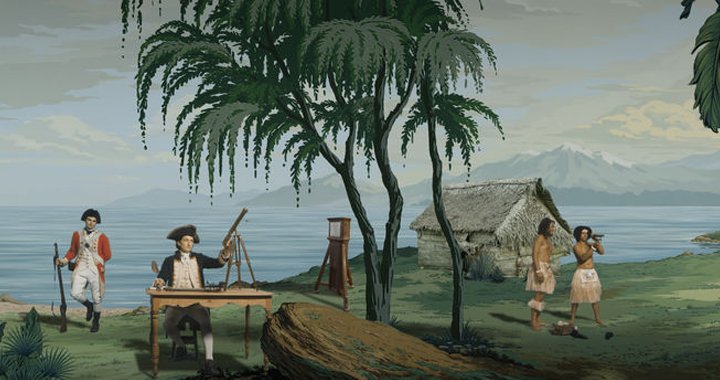
Baltic exhibition guide
October
10/10/2019
TALLINN
Alvar Reisner “From People to Houses”
Staapli 3 Art Gallery
5 September till 13 October

"From People to Houses" is an exhibition of Alvar Reisner’s most recent artworks and is his first solo exhibition in five years. As the title of the exhibition suggests, the topic of the exhibit is people, buildings, neighbourhoods, and movements of people from house to house – by car, bicycle or on foot. The artist finds inspiration from architecture and from all that carries even the slightest hint of the soviet.
Alvar Reisner himself has said that he keeps a so-called painting journal in which each entry (painting) reflects a moment, area and design of a city space. Although we can find parallels from the history of painting, Reisner thinks that historically speaking, artists mostly took inspiration from romantic landscapes, lakes and forests. And so, following the same concept, he looks at the city space and at flâneurs, observers who play a key role in understanding and portraying the city. In these moments, the artist is both the observer and the one being observed.
Reisner’s paintings are not a report on reality, but rather leave an impression of a shifted reality. Aesthetic poems that were experienced on the run. He often paints on found or reused canvases, which then continue their journey in the city space and carry their history on as foundations for the paintings. A peculiar sense of humour lies in the backdrop of his paintings, as can be seen in the titles or scenes that give them a cheeky sense of recognition.
Lisa Reihana at KUMU exhibition spaces
19 September till 26 January 2020
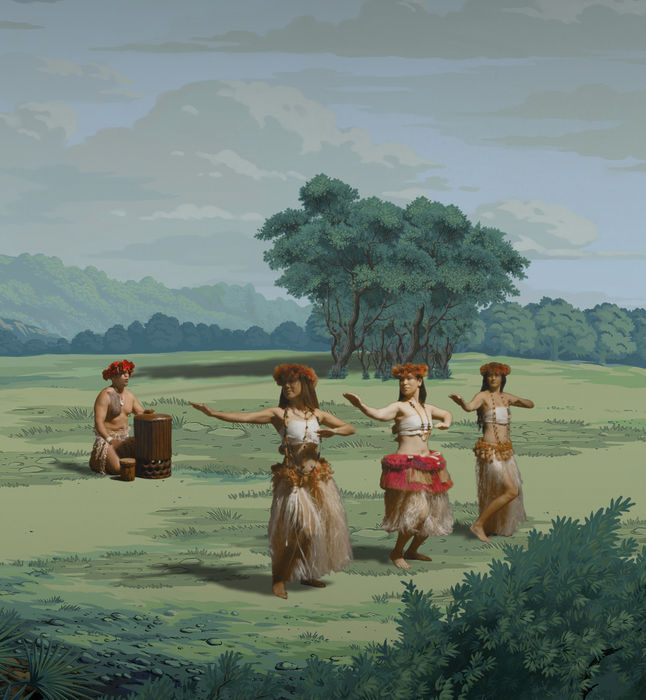
From 19 September till 26 January of next year, the exhibition “The Conqueror’s Eye” will be on view at KUMU exhibition spaces.
It is virtually impossible to overestimate the importance of images in the history of colonialism. The start of the colonial conquest of new territories coincided with the invention of the art of printing: Columbus reached America in 1492 and Gutenberg had invented the printing press in the 1440s. The art of printing made the written word accessible to wide audiences, and it also meant an explosion in the spread of images on a global level. The discovery of new continents had turned the understanding of the world as it had hitherto existed upside down. So the public was particularly interested in images depicting unknown lands and their exotic inhabitants. The images not only reflected and described the course of conquests and novel territories and their peoples, but also actively participated in conceptualising these and creating stereotypes of the “Other”, thus contributing to the belief in a radical difference between primitive natives and civilised Europeans. An emphasis on cultural differences helped to justify both the conquests and the domination of Europeans over native populations. Thus, images of the colonial territories tellingly highlight the close ties of visual culture with power. As Edward Said showed in his groundbreaking Orientalism (1978), producing and disseminating knowledge about the colonised “Other” is inextricably linked with controlling the “Other” and with expanding the power of colonists.
At the centre of the exhibition “The Conqueror’s Eye” stands Lisa Reihana’s powerful video exhibit “In Pursuit of Venus”, which challenges the stereotypes of representing the Self and the Other as they have been established in the tradition of visual culture. In a playful reproduction of a scenic wallpaper produced in France in the early 19th century, the gigantic video panorama explores and de-familiarises images of meetings between civilised Europeans and the barbaric and exotic inhabitants of Pacific islands. The work represented New Zealand at the Venice Biennale in 2017. As an extension of Lisa Reihana’s work, the exhibition also demonstrates the impact and wide spread of colonialist stereotypes in the Baltic region. It highlights the abundance of colonial visual culture in Estonian museum collections, displays illustrations of the travels of Baltic German explorers who played a prominent role in the exploration voyages organised by the Russian empire, and shows visual representations of the peoples of the Russian empire, including Estonians.
The curators of the exhibition are Linda Kaljundi, Eha Komissarov and Kadi Polli.
“Let the field of your attention…. soften and spread out” at Kai Art Center
21 September till 1 December
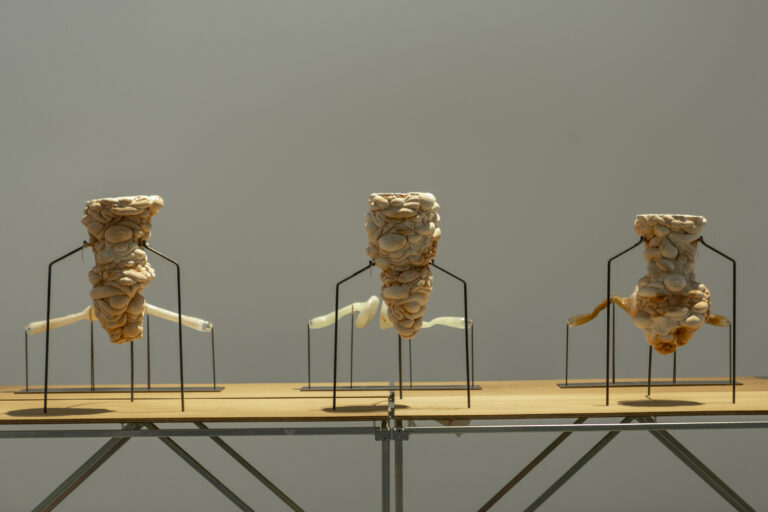
Curated by Hanna Laura Kaljo, the group exhibition “Let the field of your attention…. soften and spread out” is on view at the newly opened Kai Art Center from 21 September till 1 December.
The title of the exhibition, “Let the field of your attention…. soften and spread out”, is derived from a bodywork exercise in the handbook A Widening Field: Journeys in Body and Imagination (2004) composed by dancer, teacher of the Alexander technique and craniosacral therapist Miranda Tufnell and installation artist Chris Crickmay. Like the approach put forth in the book, the exhibition considers the creative arts through an emphasis on receptivity to our bodies and surroundings.
Amid crisis, like that of the collapse of ecosystems caused by human activity, we may gather around stories of recovery. The practices of the artists featured in the exhibition span visual art, moving meditation, deep listening, writing, textile and traditional medicinal knowledge. The gradually unfolding curatorial choreography is informed by the seasonal transition towards darkness and dormancy inherent to late autumn and early winter in Estonia. It brings attention to different registers of visibility as we gather through small private moments and those more public. The participating artists are Marie Kølbæk Iversen, Sandra Kosorotova, Pia Lindman, Andrea Magnani, Elin Már Øyen Vister, Carlos Monleon Gendall, Sam Smith and Nele Suisalu.
Hanna Laura Kaljo is an independent curator. She received her MFA in Curating from Goldsmiths College and between 2014-18 was the Co-Founder and Co-Director of Jupiter Woods in London, where she produced numerous exhibitions, discursive events, residencies, and off-site projects. Kaljo is drawn to the cūra within the curatorial, the first being the etymological root of the latter, pointing to practices of attention and healing. In her curatorial and written work she is called to hold space for a holistic conception of creativity to take hold within the community of contemporary art and culture in which she has her grounding. She draws from a range of practices including artistic research, moving meditation, ecotherapy, deep ecology, The Way of Council, and Work That Reconnects. Throughout 2018-19 she is engaged in a yearlong R&D project supported by the Developing Your Creative Practice grant from the Arts Council England, thinking through the notion of recovery. What are we recovering from? What are we called to recover?
RIGA
“The Artist Crisis Center” at Low gallery
4 October till 1 November

From 4 October till 1 November the group show “The Artist Crisis Center” will be on view at Low gallery.
“The Artist Crisis Center” will open this October in the welcoming premises of LOW gallery to provide support for creatives cheated by Fortune or beaten by the hooves of Pegasus. Accompanied by a shelter for unwanted art and an around-the-clock help centre, it will provide refuge and assistance for those in need, all while surrounded by a soothing atmosphere to ease agitated minds and restless souls.
The project is curated by Ieva Kraule-Kūna and Elīna Vītola and the participating artists are Normunds Brasliņš, Anna Ceipe, the artist group F5, Alexei Gordin, Flo Kasearu, Darja Meļņikova, Ojārs Pētersons, Maija Kurševa, Klāvs Upacieris, Līva Rutmane, Līga Spunde, Kristaps Zariņš and Amanda Ziemele.
Paintings by Ivan Aivazovsky at the Art Museum “Riga Bourse”
5 October till 5 January 2020
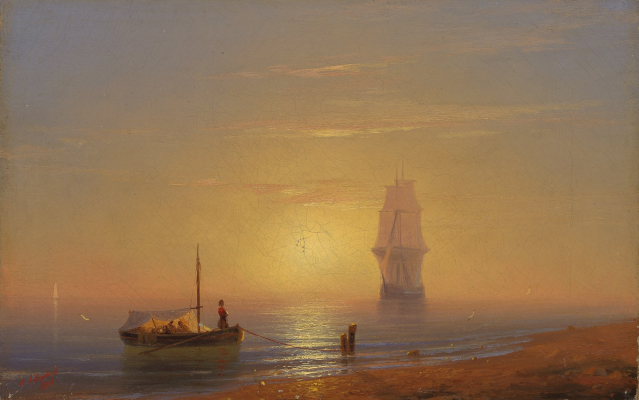
From 5 October 2019 until 5 January 2020 the exhibition “Metaphysics of Light”, dedicated to the creative work by the outstanding Russian art school painter Ivan Aivazovsky (1817–1900), will be on display at the Art Museum “Riga Bourse”.
Of Armenian descent, the artist Ivan Aivazovsky was a world-known sea landscape master already admired by his contemporaries during his lifetime. His popularity had not experienced a marked increase until just recently – there are now numerous exhibitions and publications on Aivazovsky, and his artworks are highly praised at international art auctions.
The exhibition will show Aivazovsky’s works from various periods in which light and illumination are the main components of the composition. Paintings from Latvian, Estonian and Ukrainian museum collections create a combination of works with one theme – variations of lighting. Aivazovsky’s skill in depicting such elusive objects as water and light shows his deep interest in the research of natural phenomenon as well as his remarkable memory and perfected painting technique. Aivazovsky used a complex glazing technique and special brushwork to achieve the presence of light and the transparency of water. Sunrise, sunset, when the sun is at its zenith, diffused light of an afternoon, moonlight – these varied metamorphoses of light fill Aivazovsky’s paintings with particular colouristic refinement and nuances of an emotional atmosphere. Light which radiates on the surface of the sea or glitters through waves is one of the most characteristic features of Aivazovsky’s painting and is visible throughout the artist’s work.
A solo show by fashion design duo MAREUNROL’S
Museum of Decorative Arts and Design
10 October till 8 December

From 10 October to 8 December 2019, the Museum of Decorative Arts and Design will for the very first time present an ambitious exhibition of the renowned Latvian fashion design duo MAREUNROL’S (Mārīte Mastiņa-Pēterkopa and Rolands Pēterkops), titled "MAREUNROL’S. Altered States of Fashion".
The exhibition presents a retrospective of MAREUNROL’S collections expanded with video documentation, photographs, sculptural elements, and an audio installation. The authors attach meaning to every detail; their aim is to create clothing that tells a story and lives its own life, just like a conceptual work of art.
Una Meistere, director of the art and culture portal Arterritory.com, writes: “Fashion design duo MAREUNROL’S expand the boundaries of design and at the same time break through them. They are thinkers and storytellers who raise clothing (fashion) outside of the familiar framework of functionality, using it as a thread for studying the world and the self. Their collections are constructions of mind, imagination and sensations, which, like finely tuned antennae, detect the vibrations of their time, deconstructing them, extracting their essence and visualising them in the universal language of fashion, thus constantly urging us to take a look at the world from a different perspective.”
Established in 2006, MAREUNROL’S is the internationally most-recognised Latvian fashion brand. They have taken part in numerous international competitions and festivals, biennials and group exhibitions abroad. In 2009 the duo earned the two main prizes at the 24th International Hyeres Fashion and Photography Festival in France. In 2016 MAREUNROL’S were among the ten European nominees for the prestigious International Woolmark Prize in the menswear category.
In 2013 Phaidon Press' survey Pattern included MAREUNROL’S among 100 of today's most exceptional young designers. Their costume also graced the cover of the special edition of the respected lifestyle magazine Wallpaper, dedicated to the fashion of the future.
A retrospective of Aleksandra Beļcova
Latvian National Museum of Art
12 October till 12 January 2020

From 12 October till 12 January 2020, the main building of the Latvian National Museum of Art will host the exhibition “Aleksandra Beļcova (1892 – 1981). Painting. Graphic art. Porcelain of the workshop Baltars”. This will be the largest retrospection of works of the artist so far and will comprehensively demonstrate her versatile creative heritage.
Aleksandra Beļcova arrived in Riga in 1919 and lived here until the end of her life. Her oeuvre became an integral part of the history of Latvian art, and she is also referred to as one of the first modernist artists in Latvia.
Aleksandra Beļcova wasn’t just a painter – she was also an illustrator and a graphic and porcelain artist. In her art she preferred the genre of portraiture and often depicted her loved ones, friends and colleagues.
The curator of the exhibition is Nataļja Jevsejeva.
VILNIUS
Violeta Bubelytė “Mono-Play Differently”
Prospekto gallery
24 September till 26 October
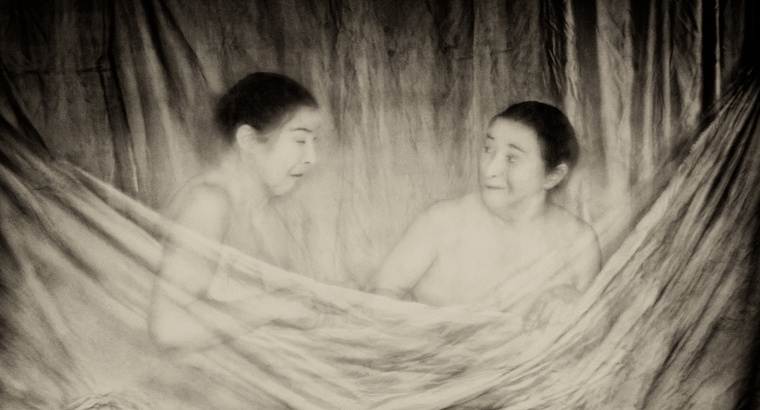
According to photography historian and art critic Adam Mazur, the female body in Bubelytė’s works is portrayed in the most magnificently subtle manner. The artist is trying hard not to offend the observer. Critics note that she’s interested in fighting the patriarchy, tackling the male approach, and dissolving conventions, but it just isn’t so. Bubelytė is obviously much more likely to play with those conventions as this makes her happy, and she passes this pleasure on to the spectators. She uses her body to recreate the schemes of portraying women in photography.
Her newest works focus on the motifs dominating her art. The author increases the number of her portraits, reproduces the images of herself, and doesn’t limit herself to two, three, or four silhouettes in a single photograph. As if this wasn’t enough, she also composes smaller series, creating larger wholes while these inspire images resembling theatrical scenes. Bubelytė injects a joke or a funny situation into her art as the expressions on the faces keep becoming stronger. Over the years, Bubelytė’s work has gradually depicted less melancholy, more humour, less seductive narcissism, and more distancing – more believing in herself and her body, more confidence that only a mature woman can possess. The distance is indeed there, separating herself from the world and the art of photography.
“The Origin of Species: 1990s DNA”
MO Museum
5 October till 23 February 2020

The first decade of independence from the USSR shaped who we are today. The decade of chaos, freedom, scarcity and the unofficial discovery of the state. In “The Origin of Species: 1990s DNA”, memorable artifacts once belonging to regular people have been brought together in an exhibition demonstrating the shift to a more structured and civilised existence. Why are today’s Lithuanians the way they are? This exhibition will uncover the conflicting mood of society, the euphoric nature of new beginnings, and the complexity of change. A glimpse at art, culture, and ourselves, bundled with stories of everyday life. Music, fashion, the market economy, a newly born mafia and pop culture are all reflected in the artworks of this MO collection.
The curators of the exhibition are Vaidas Jauniškis, Rimantas Kmita, Mantas Pelakauskas, Miglė Survilaitė, Aurimas Švedas, Tomas Vaiseta and Renata Valčik.
A Programme of New Audiovisual Works
National Gallery of Art
6 October till 19 October

The Gaida Festival 2019, in cooperation with the National Gallery of Art, is presenting a programme of new audiovisual works. Two of the works in this programme are by the Lithuanian National Culture and Art Award-winning artists Žilvinas Kempinas, a visual artist based in New York, and the Milan-based composer Justė Janulytė. The world premier of their collaboratively produced audiovisual works “SKYCITY” and “WAVES” will take place at Gaida Festival 2019.
“SKYCITY” (2018) unfolds as a contemplative journey through a slow stream of digital light and sound. The work provokes a wide range of emotions: from tension and anxiety to the peaceful spacing-out that goes with dreaming oneself away. Avoiding an artificial synchronisation of sound with visual matter, there is instead an amplified polyphony of two parallel worlds of sound and light – alterations in rhythms and distances offer surprising coincidences and metaphoric overlaps. “WAVES” (2019) presents a form of meditation on the nature of light and sound as waves, but more generally, about the nature of us all as some form of waves, existing always in slightly different frequencies and lengths. The overlapping waves of light and colour create a multitude of lines that speed across the walls, blending into a single body of light and sound.
Artist Vaclovas Nevčesauskas and composer Vytautas V. Jurgutis will premiere their collaborative audiovisual project “QUANTONOM” at Gaida Festival 2019. The National Gallery of Art auditorium will be redesigned for the work: new systems for spatial sound and mechatronical video will be installed. “QUANTONOM” is an innovative multimedia work featuring robotic elements. It is based on a synthesis of sound and mechatronical objects which are organised through a method of spatial choreography and embody a variety of abstractions – an imaginative medium of unknown particles. The work was inspired by early theories of quantum mechanics and their astonishing ability to excite the imagination. In this work, sound and images on glowing and moving spots act as a sensory puzzle that fosters both consciousness and one’s intuition.